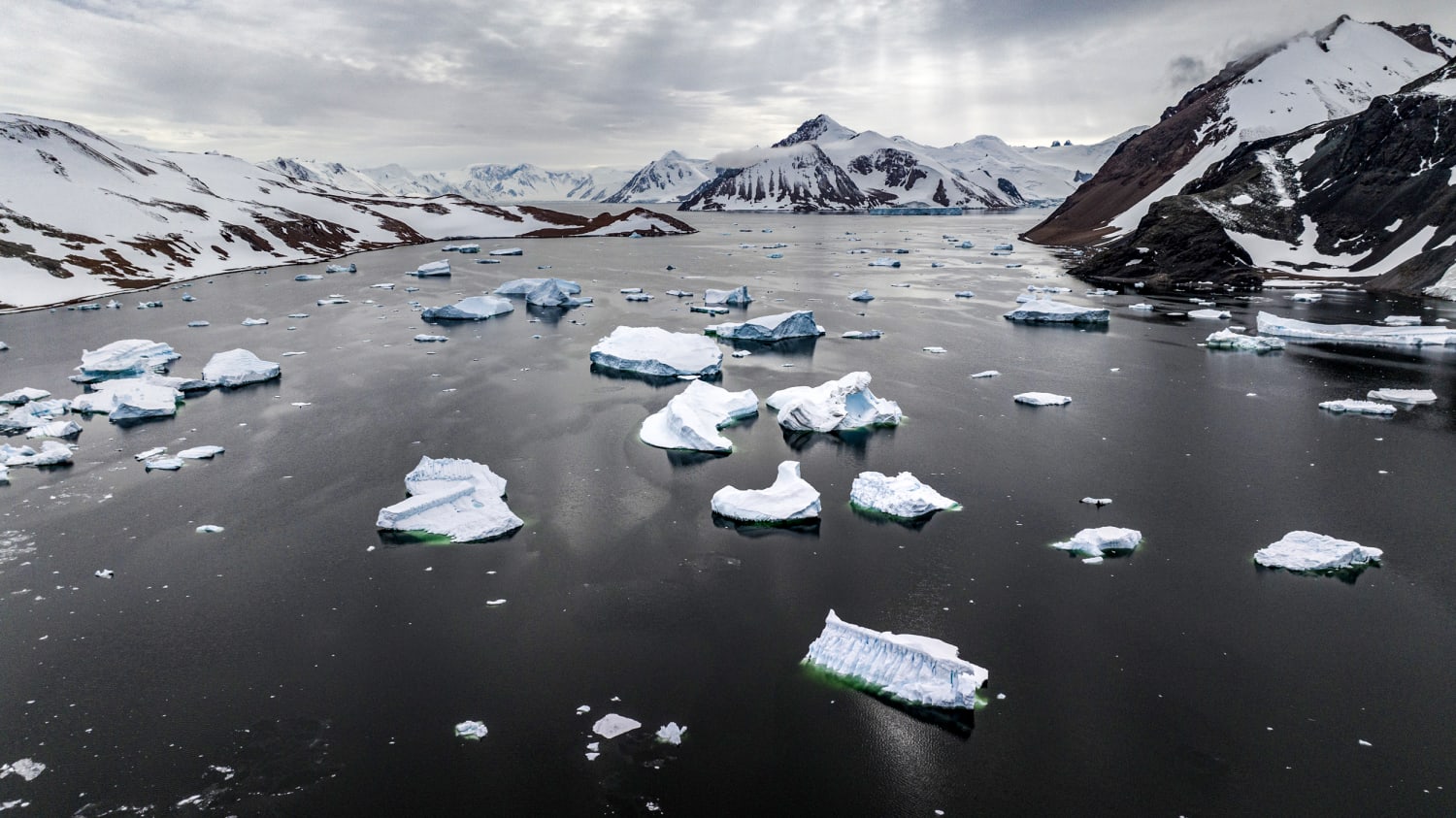New research suggests that climate change is changing the Earth to its core.
As polar ice and glaciers melt due to global warming, water that was once concentrated at the top and bottom of the globe is now moving toward the equator. The extra mass around the middle of the Earth is slowing its rotation, which in turn is lengthening our days.
A new study provides further evidence of this dynamic, suggesting that changes in the planet’s ice were profound enough to affect Earth’s axis—the invisible line at its center around which it rotates. Together, these shifts cause feedback beneath the surface, affecting the fluids moving in Earth’s molten core.
The results were published in two journals, Nature Geoscience and Proceedings of the National Academy of Sciences, last week.
The studies, along with similar research published in March, suggest that humans have manipulated fundamental elements of the planet’s physical properties — a process that will continue even after global temperatures stabilize and ice sheet melting reaches equilibrium.
“You can add the Earth’s rotation to the list of things that humans have completely influenced,” said one of the authors of the two new studies, Benedikt Soja, an assistant professor of space geodesy at the Swiss Federal Institute of Technology in Zurich.
The change in Earth’s rotation is significant enough that it could one day rival the influence of tidal forces from the moon — if carbon emissions continue at extreme levels, Suga said.
In general, the speed of the Earth’s rotation depends on the shape of the planet and where its mass is distributed – factors that are governed by several opposing forces.
Scientists often compare it to an ice skater: When skaters spin with their arms outstretched, their spin will be slower. But if they keep their arms taut, their spin will be faster.
In a somewhat similar way, tidal friction in the oceans due to the moon’s gravity slows the Earth’s rotation, and this has had the biggest impact on the planet’s rotation rate historically, Suga said.
Meanwhile, the slow rebound of the Earth’s crust in some high-latitude regions after the removal of ice-age glaciers is working in the opposite direction, speeding up the planet’s rotation.
Both processes have long been expected to have effects on the Earth’s angular velocity.
But now, rapid ice melt due to global warming is a powerful new force. And if humans continue to pollute the planet with carbon emissions, the impact of ice loss could exceed that of the moon, Suga said.
“In the worst-case scenario, climate change will become the most dominant factor,” he added.
The fourth important factor that influences Earth’s rotation is the movement of fluids within its core. Scientists have long known that this can speed up or slow down the planet’s rotation—a direction that can change on 10- to 20-year cycles. Right now, Earth’s core is temporarily speeding up the Earth’s rotation slightly, counteracting the slowdown caused by climate change.
Climate change also appears to be affecting the Earth’s core, as a result of melting ice and shifts in the planet’s axis of rotation.
The researchers behind the new study built a 120-year model of polar motion, or how the axis shifts over time. They found that changes in the distribution of mass on the planet due to melting ice likely contributed to small fluctuations in polar motion.
Suga estimated that climate change was likely responsible for a one-meter change over ten years.
Research also suggests that the movement of molten rock within the Earth adjusts to changes in its axis and rate of rotation—a feedback process in which the Earth’s surface affects its interior.
“The rotation changes a little bit, and we think that could indirectly affect the heart. That’s something that’s not easy to measure directly because we can’t get down there,” Suga said.
The findings relate to how humans tell time and how satellites are positioned in space.
“If we want to send a new mission to Mars, for example, we really need to know the exact state of the Earth in space, and if that state changes, we might make a navigation error or an exploration error,” Suga said.
For example, a shift of the Earth’s axis by one meter could cause a spacecraft to miss its target by 100 or 1,000 meters when it reaches Mars.
As for measuring time, research published in March suggested that climate change has delayed the need to add a “negative leap second” to Coordinated Universal Time to keep the world’s clocks in line with the Earth’s rotation.
The new research “fits very well” with his work, said Duncan Agnew, a geophysicist at the Scripps Institution of Oceanography at the University of California, San Diego, who led the earlier study.
“It extends the result into the distant future and looks at more than one climate scenario,” Agnew said, adding that although Suga and his co-authors took a different approach, they came to a similar conclusion to his.
“Multiple discoveries are almost the norm in science — and this is another case in point,” Agnew said.
The new research could indeed offer insight into how changes on Earth’s surface affect what’s happening inside, said Thomas Herring, a professor of geophysics at MIT who was not involved in either study.
“For feedback between surface processes and the core, I find that plausible,” Herring said in an email, explaining that “large-scale” processes at the surface could “penetrate the liquid core.”

“Amateur organizer. Wannabe beer evangelist. General web fan. Certified internet ninja. Avid reader.”




/cdn.vox-cdn.com/uploads/chorus_asset/file/25550621/voultar_snes2.jpg)


More Stories
Watch a Massive X-Class Solar Explosion From a Sunspot Facing Earth (Video)
New Study Challenges Mantle Oxidation Theory
The theory says that complex life on Earth may be much older than previously thought.